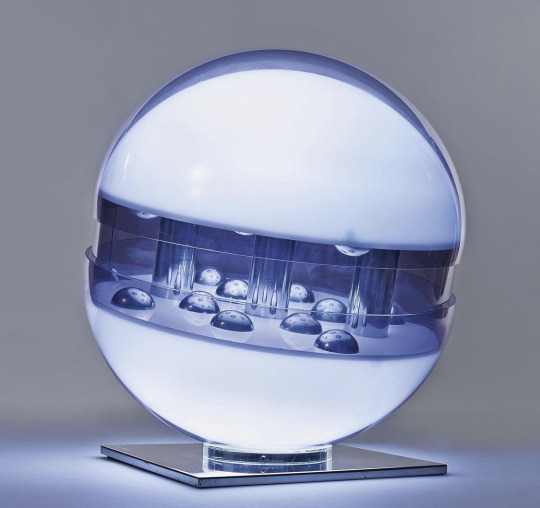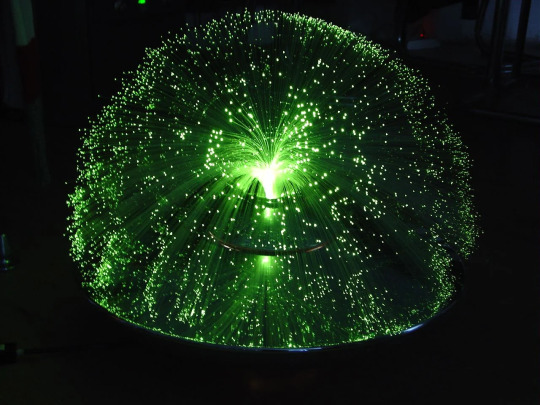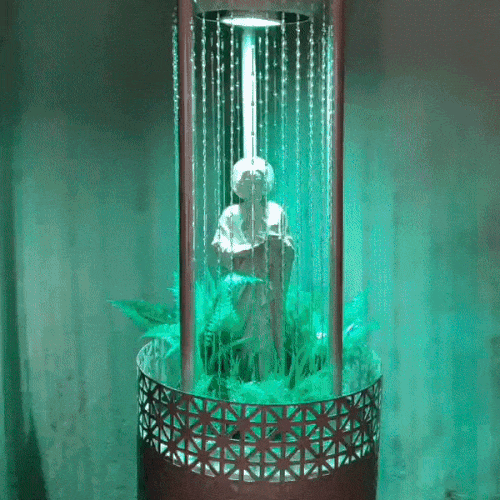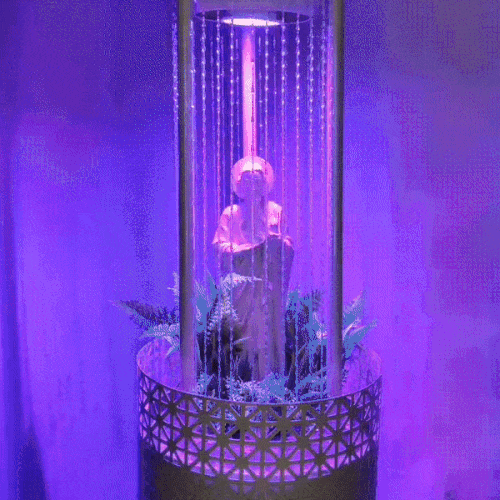#1970s Lamp
Explore tagged Tumblr posts
Text

MODERN HOME DECOR IDEAS À LA “SUPER FUZZ COVEN” – RETRO LAMPS EDITION.
PIC INFO: Spotlight on a late 60’s/early 70s era Gilbert Softlite green mushroom lamp. Made in Montreal, Canada. Home décor & lamp from the private collection of @superfuzzcoven, c. early March 2024.
Source: www.picuki.com/media/3329517276656778219.
#Gilbert Softlite#Gilbert Mushroom Lamp#60s#Super Seventies#1960s Lamp#1970s Lamp#Retro Lamp#Mid Century Modern Design#Mid Century Design#Mid Century Home Décor#Sixties#Modern décor#Home décor#Décor#Modern Design#Vintage Lamp#Atomic Lamp#Space Age Design#Vintage Style#70s Lamp#Vintage Design#60s Lamp#70s Style#1970s#Plastic Mushroom Lamp#Mushroom Lamp#1960s#Lamp#Space Age Lamp#Sputnik Lamp
6 notes
·
View notes
Text

12K notes
·
View notes
Text

Bright Ideas for Your Home, 1978
#vintage#vintage interior#1970s#70s#interior design#home#decor#home office#sawhorse#trestle#glass top#table#mustard#yellow#pharmacy lamp#attic#style#modern#architecture
497 notes
·
View notes
Text

Modern Living Room Decor, 1972
#1970s#70s#70s decor#midcentury modern#retro futurism#living room#family room#drop ceiling#pendant lamps#1972#seventies#home decor#interior decorating#readers digest
154 notes
·
View notes
Text

1971
#retro#bedroom#kid#The Beatles#Steal This Book#Abbie Hoffman#teen#peace poster#Yellow Submarine#vintage#1970s#1960s#lava lamp
62 notes
·
View notes
Text

Francesco Bocola: “Bubble Lamp” for Pierre Cardin, (1970)
440 notes
·
View notes
Text





Gianfranco Fini, "Programma" wall lamp,
Aside from Mario Vento who worked under a few aliases, Gianni Colombo, Rinaldi Cutini, Fabrizio Cocchia and Gianfranco Fini were among the designers creating new forms in lighting. The lights produced by New Lamp spoke to the future; the designs were inspired by artistic movements such as Kinetic Art and Concrete Art but they also referenced Art Deco forms.
Handmade by local artisans and made of the highest quality to order, each New Lamp design was produced in small quantities — from singular, one-of-a-kind works and editions of five or six to more popular pieces in editions of no more than 100 examples.
In total, New Lamp created at least forty-five lamp models. Sparing no costs on craftsmanship or materials, New Lamp’s inventive and sculptural productions captured media attention and its lamps were featured in publications of the period including Domus, Abitare and Casa Vogue. Despite the enthusiasm for New Lamp, the company only lasted a few years closing in 1973 – 1974.
New Lamp Co., Italy, c. 1970,
Stainless steel, methacrylate plastic,
41 h × 41 w × 6 d in (104 × 104 × 15 cm)
#art#abstract#abstraction#forms#sculpture#minimal#kinetic#new lamp Co.#1970#italy#stainless steel#methacrylate#programma#gianfranco fini#wall lamp
28 notes
·
View notes
Text

Fiber optic lamp, Carrara, Italy, 1970.
122 notes
·
View notes
Text

138 notes
·
View notes
Text




Gaetano Sciolari, Table Lamps System series, Model 139,
Italy, c. 1970,
Chromed brass, brass & wood,
Height 90 cm, Depth 24 cm, Width 24 cm,
Shade 42 cm D 37 cm H
6 notes
·
View notes
Text



x - x - x
MODEL: THE ALADDIN
(Note: this model's name was spelled "Alladin" in catalogs. However, collectors have mostly taken to referring to it as the Aladdin, and I prefer to stick to the typical English spelling of the folk tale.)
Brand: Lava Lite
Introduced: 1975
Discontinued: Unclear, though the lamp no longer appears in a 1979 catalogue.
Base and cap colors: brass
Wax colors: orange, red, green
Fluid colors: clear, yellow, blue
Size: height 16” or 14”, diameter 9”
The 1970s were a time of innovative and out-there designs for the Lava Lite brand. Models of the 1960s established iconic shapes which would be iterated on over the years, and from the 1980s onward, the brand’s new offerings would focus on color and pattern variety as well as lamps with more classical shapes but featuring sculpted and highly decorated bases. In the 70s, though, interesting silhouettes were what made new designs stand out, and I think none is more emblematic of this design ethos than the Aladdin.
The Aladdin is an example of a high-concept lava lamp that does not rely on gimmicky detailing and patterns to get its core idea across. In a way, the Aladdin just makes sense – for what lava lamps are, the Aladdin feels like an inevitability. What is a lava lamp if not the idea of a magical lamp? It remains notable that the Aladdin preceeds the Disney movie – if it had not already been made, maybe it would’ve come out in the 90s.
The Aladdin originally retailed for $29.99. Aladdin lava lamps can occasionally be found on second-hand sites, where they usually sell for anywhere from $150 to $700.
MY REVIEW:
It feels like the Aladdin should be a lamp one has a strong opinion on. Is it magical, or gimmicky? Is it pleasantly quirky or over-designed? Is it timeless or dated? When I look at the Aladdin, I think I should either love it or hate it… But I don’t. I don’t think I’m a huge fan of it, really – I’m certainly not interested in acquiring one – but it also doesn’t verge into gaudiness enough to fully turn me off it. Simply put: I’m pretty ambivalent about the Aladdin, even though I tend to have pretty strong ideas about lava lamp designs.
I also feel I should have a set opinion on the cultural background of its design. At times the Aladdin feels somewhat awkwardly orientalist. Obviously, the lamp is based on Arabian oil lamps, and the name refers to the SWANA folk tale. Is turning this type of lamp (and choosing this particular name) into a cheap consumer product in poor taste? I’m not sure about that either; I can’t manage to really be offended by the Aladdin, at least not more than I am charmed by it. I seem to always be of two minds regarding the Aladdin.
SILHOUETTE: 7/10
My ambivalence towards the Aladdin means I’m not particularly enthusiastic about its silhouette, but I think it may be more important to judge it based on what it’s trying to achieve, and not simply on whether I think it’d look good in my bedroom. And as far as its design intent goes, the Aladdin does pretty well. The shape of the lamp is immediately recognizeable and unique. You could probably guess its name just by glancing at it.
On the other hand, I also think more care could have been put into the design. If you take a look at the traditional type of lamp the Aladdin imitates, you’ll find what I think is a much more elegant shape: far from a stout, round base with a short spout – which is almost more similar to an occidental teapot – these lamps usually have elongated silhouettes and long, curving spouts, which give them a far more refined look. In comparison, the Aladdin looks a lot less elegant and more clumsy.

One example of an Arabian-style oil lamp
Still – you can recognize the inspiration so evidently that the silhouette still works. It’s also worth considering that making the lamp longer could have also required scaling it up, and making it any bigger would not have made it more graceful.
DETAILS: 9/10
The Aladdin, like other Lava Lite lamps of the era, does without much detailing. In a way, it maintains a degree of simplicity and sparsity of design. Again comparing it to its inspirations, the oil lamps it is based on are usually much more decorated, with varied and intricate carvings. Does that mean the Aladdin should have emulated them, though? Ultimately, I don’t think so. With the colorful lava globe being its visual focal point, a lot of extra detailing would have made it look crowded – and I think what would have likely been a poor imitation of traditional Arabian designs would have thrown the lamp squarely into “too orientalist for comfort”.
Though, while the sparse design of the Aladdin works for it, the fact its spout and handle are black and don’t match the base is a faux-pas in my book. It makes them look like last-minute add-ons, rather than whole parts of the lamp. I think I’d have given the Aladdin full points here if those elements matched the brass of the base.
COLORWAYS: 8/10
The Aladdin only came in three colorways, all of them with a brass base: clear liquid/red wax, yellow liquid/orange wax, and green liquid/blue wax.
I think the choice to only include a brass base and cap makes sense: I think only a gold color would have also made sense, and it wouldn't have been different enough from the brass color to really need including.
As far as the globe goes, the different colorways of the lamp work well for what it’s doing. The colors all fit with the Arabian inspiration of the design, and I think they also work in evoking the idea of a genie’s magical form trapped within the glass globe. Still – a few additional colorways would have been welcome. I've seen a few custom Aladdins featuring purple wax, which I think is a good idea. I would have also liked to see a yellow liquid/red wax version; something including either pink wax or pink liquid would have also been lovely.
POWER: 6/10
Once again, I’m a bit conflicted here. The Aladdin should be really powerful, right? With a rather simple design, it evokes such a clear, defined vision! It almost tells a story simply by existing. But then again – why do I feel so lukewarm about it? When I think of those really impactful lava lamp designs, those that stay with me even when I’ve never had the chance to see them in the flesh, this is simply not one that comes to mind. Ultimately, the Aladdin just doesn’t have the kind of powerful draw I find in other unique designs such as the Wizard or the Fluidium.
MY FINAL LAVA SCORE: 7.5/10
Is my information wrong? Did I miss a detail? Do you have a better picture of this model? Is there another model you’d like me to look into? Please send me an ask or submit relevant pictures!
16 notes
·
View notes
Text

144 notes
·
View notes
Text

No matter how tiny a room is, make space for accessories. Fill the niches with accessories appropriate to the room and the person who occupies that room. This room obviously belongs to a photography buff. The space along the ceiling makes a perfect place to display his prints.
Better Homes and Gardens Creative Decorating on a Budget, 1970
#vintage#vintage interior#1970s#70s#interior design#home decor#studio#blue#yellow#photography#wood paneling#corner desk#shag rug#pendant lamp#contemporary#kitschy#style#home#architecture
840 notes
·
View notes
Text

Living Room Decor, 1974
#1970s#70s#70s living room#70s decor#vintage decor#70s home#1974#seventies#retro decor#70s style#decor ideas#design ideas#pendant lamps#chrome#windows beautiful
40 notes
·
View notes
Text


A forgotten trend of the late 60s and 70s, rain lamps use mineral oil slowly dripping down fishing lines to simulate rainfall in slow motion. Psychedelic colors not included.
🛼 Rainoillamps on IG
#rain lamps#vintage#1970s#70s#stim#owl post#color change#rainbow#groovy#basically your grandparents' lava lamp
111 notes
·
View notes
